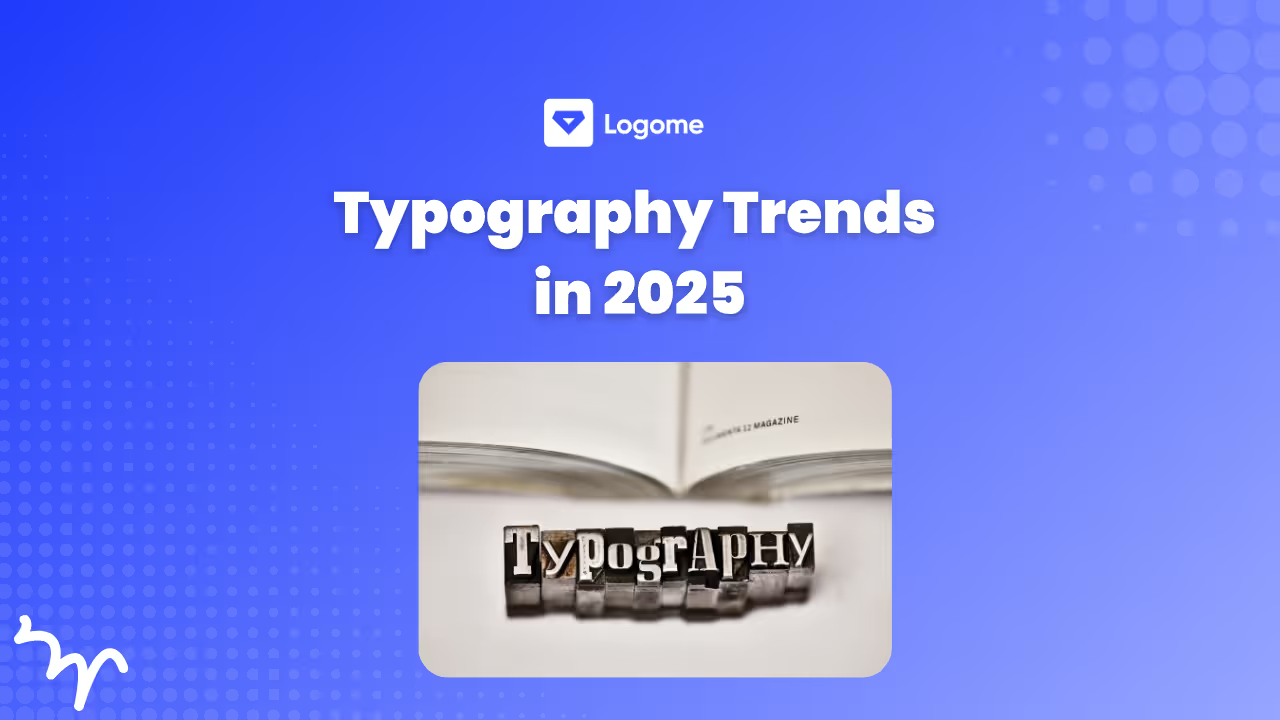What Is Brand Consistency
Discover what brand consistency means, why it matters, and how to maintain it across every channel. Learn key elements, metrics, and strategies for success.
Discover what brand consistency means, why it matters, and how to maintain it across every channel. Learn key elements, metrics, and strategies for success.

If you’ve ever looked at a brand and instantly recognized it without even seeing the logo, you’ve experienced brand consistency in action. Think about Apple’s sleek minimalism, Nike’s inspiring tone, or Starbucks’ warm, familiar vibe — they all deliver the same look, feel, and message, no matter where you interact with them.
So, what is brand consistency really about? It’s not just matching colors on a website or using the same font in every ad. It’s the art (and discipline) of making sure every touchpoint — from your Instagram post to your packaging — tells the same story and reinforces the same identity.
In this guide, we’ll break down exactly what brand consistency means, why it can be a game-changer for your business, and how you can maintain it across every channel without losing your creativity in the process.
Before you can master brand consistency, you need to understand what it truly means in practice — not just the textbook definition. This section will break it down so you can see exactly how it applies to your marketing, your customer interactions, and even your internal culture.
Brand consistency is the ability to present your brand’s identity, message, and values the same way across every interaction a customer has with you. It’s about being recognizable even when your logo isn’t visible.
For example, you could spot an Apple ad by its clean layout and minimal copy, or identify a Coca-Cola post by its upbeat tone and signature red palette. It’s about building those recognizable cues over time so your brand becomes instantly familiar.
People trust what they recognize. Consistency tells your audience, “We know who we are, and we deliver the same quality every time.” This builds familiarity, and familiarity builds trust — which often translates into loyalty and repeat business.
A study by Lucidpress found that consistent brand presentation can increase revenue by up to 23%. It’s not just about looking good; it’s about becoming a trusted part of someone’s life.
Brand consistency is the outcome; brand guidelines are the tool to get there. Guidelines act like the instruction manual for your brand — covering colors, fonts, tone of voice, and how to apply them in different scenarios.
Without guidelines, it’s easy for your message to become scattered. But even the best guidelines are useless unless people actively follow them to create that consistent experience your audience expects.
Now that you know what brand consistency is and why it matters, it’s time to unpack the building blocks behind it. These are the elements that, when aligned, make your brand instantly recognizable and emotionally connected to your audience.
Your visuals are often the first thing people notice. This includes your logo, color palette, typography, photography style, and even how you use white space.
Think of McDonald’s golden arches — whether it’s on a billboard or a coffee cup, the look is unmistakable. When these visual cues stay consistent, they create a sense of reliability that sticks in people’s minds.
Your voice is your personality in words. It’s not just what you say but how you say it — whether your tone is playful, formal, or inspirational.
Take Nike’s “Just Do It.” It’s more than a slogan; it’s a voice that motivates. Every ad, product description, and social caption reinforces that same confident tone.
From your website’s checkout process to the way your support team greets customers, the experience should feel seamless and familiar.
If your Instagram is upbeat and friendly but your in-store staff feels cold and transactional, customers will feel a disconnect — and trust starts to erode.
This is about the promises you make and how your brand behaves internally and externally. Do your values show up in your customer service? Does your team embody the same culture you promote in your marketing?
Brands like Patagonia excel here by embedding their environmental mission into every action, from supply chain to social campaigns.
Understanding the elements is one thing — but putting them into action is where real consistency happens. This framework breaks it down into practical steps you can follow, whether you’re a solo entrepreneur or leading a global brand team.
Start by taking an honest look at where your brand shows up. This means reviewing your website, social media, ads, packaging, emails, and even internal documents. To strengthen your audit, try using search by image to see where your brand visuals appear online and detect any unauthorized use.
Ask: Do they all look and sound like they belong to the same brand? Are there off-brand colors, mismatched fonts, or inconsistent messaging? Document the gaps so you know what to fix first.
Your guidelines should go beyond logos and colors. Include sections on tone of voice, imagery style, content formats, and usage rules for every channel.
Make them visual, easy to navigate, and accessible to everyone — from in-house teams to freelancers. The easier they are to follow, the less room there is for inconsistency.
Even the best guidelines need people to enforce them. Assign “brand guardians” or form a brand council to review and approve major assets.
A RACI chart (Responsible, Accountable, Consulted, Informed) can help clarify who does what, so nothing falls through the cracks.
A DAM is your brand’s central library — storing approved logos, templates, images, videos, and documents.
With the right DAM, your team can access up-to-date assets instantly, avoiding the dreaded “wrong logo” scenario. Look for features like version control, permissions, and expiration dates.
Consistency isn’t just a marketing job — it’s everyone’s job. Run onboarding sessions for new hires, and offer refresher workshops for existing team members.
Certify agencies or partners before they produce branded materials. When everyone understands and believes in the brand, consistency becomes second nature. Using mentoring software can help guide employees and partners, providing ongoing support and resources to maintain brand standards across all touchpoints.
Having a framework is great, but the real challenge is applying it everywhere your brand appears. This is where many businesses slip — one channel feels polished, while another feels disconnected. Let’s make sure your brand delivers a consistent experience, no matter the platform.
Your social channels are often the first point of contact for new audiences, so they need to look and sound unmistakably you.
Maintain the same tone of voice, color palette, and visual style across posts. Use branded templates for graphics, and create a style guide for captions so multiple team members can post without diluting your personality.
Your website is your brand’s home base. From the headline fonts to the button styles, everything should feel cohesive.
Keep messaging aligned with your brand promise, and ensure blog posts, landing pages, and product descriptions all follow the same tone and structure for a seamless user experience.
Emails are a direct line to your audience — treat them as prime brand real estate.
Use consistent header styles, color schemes, and sign-offs. Standardize email signatures across your company, ensuring they include approved fonts, logo placement, and even CTA links.
If you sell physical products, your packaging is part of the brand experience. Keep materials, design style, and messaging consistent so customers recognize you instantly.
Even shipping labels, thank-you cards, or receipts should reinforce your visual identity and tone. Small details here can leave a lasting impression, including QR codes generated using The QR Code Generator (TQRCG) which can link customers to product instructions, loyalty programs, or exclusive offers while staying perfectly on-brand.
You can’t improve what you don’t measure. Tracking the right metrics turns brand consistency from a vague goal into something you can monitor, optimize, and prove to stakeholders. These KPIs will help you see exactly where you’re winning and where you need to tighten up.
Look at leading indicators that show whether your team is following the brand playbook. These include:
These metrics reveal adoption levels before inconsistencies start to show up publicly.
Create a scorecard that combines different data points into a single health score. For example:
Score yourself quarterly and track improvement over time. A drop in score signals where action is needed.
Data is useless unless it leads to changes. If approval times are slow, streamline the process. If off-brand incidents are rising, refresh training or simplify your guidelines.
Your goal is to catch small inconsistencies before they snowball into a diluted brand identity.
Once the basics are in place, the challenge becomes maintaining consistency as your brand grows, expands into new markets, or partners with others. These strategies will help you stay on-brand even in complex situations.
If you operate internationally, a “copy-paste” approach won’t always work. Colors, images, and even words can carry different meanings in different cultures.
Create a flexible framework — lock core elements like your logo and key brand values, but allow localized visuals, idioms, and references that resonate with regional audiences. Always run cultural and translation checks before launching in a new market.
When partnering with another brand, it’s easy for your identity to get lost. Define rules for logo placement, shared color usage, and messaging hierarchy.
For example, decide in advance whether your logo should appear alongside or above a partner’s, and set minimum sizing requirements to protect visibility.
AI can speed up content creation, but without guardrails, it can also produce off-brand materials. Develop prompt libraries that include tone-of-voice examples and brand-specific terminology.
Implement a human review process for AI-generated visuals and copy, ensuring every piece meets your guidelines before it goes live.
Not every improvement requires a massive rebrand or months of planning. If you want to see quick results, here are actionable steps you can take in the next 30 days to tighten up your brand consistency.
Small changes, done consistently, build the foundation for a brand that’s instantly recognizable.
Brand consistency isn’t just about matching colors or fonts — it’s about showing up with the same identity, values, and quality every single time your audience interacts with you. It builds recognition, nurtures trust, and makes your marketing more effective across every channel.
When you treat consistency as a business discipline rather than a design detail, it becomes a growth multiplier. The brands people remember are the ones they feel they know — and that familiarity comes from being consistent, not just creative.
Start small, track your progress, and refine as you grow. Over time, those aligned touchpoints will do more than make your brand recognizable — they’ll make it unforgettable.
Brand consistency is showing up with the same look, voice, and experience across every touchpoint. It makes your brand recognizable without a logo and builds trust by reinforcing the same story everywhere customers meet you.
Consistency boosts recognition, trust, and perceived quality. It also speeds execution because teams reuse approved assets and patterns, cutting revisions and confusion. Over time, this compounds into stronger loyalty and better marketing performance.
Create clear guidelines, centralize assets in a DAM or brand portal, and lock templates for common formats. Add lightweight approvals, train teams and partners, and run quarterly audits to catch drift before it spreads.
Track leading indicators like template/asset usage, guideline views, and approval cycle time. Pair them with outcomes such as brand recall, sentiment, and repeat purchase rate. Roll it up into a simple scorecard you review each quarter.
Guidelines are the rules and resources; consistency is the result customers feel. You can have a beautiful style guide, but without adoption, training, and enforcement, the experience won’t be consistent.



Discover how 500,000+ businesses and creators are using our AI logo maker in their Logo creation.



